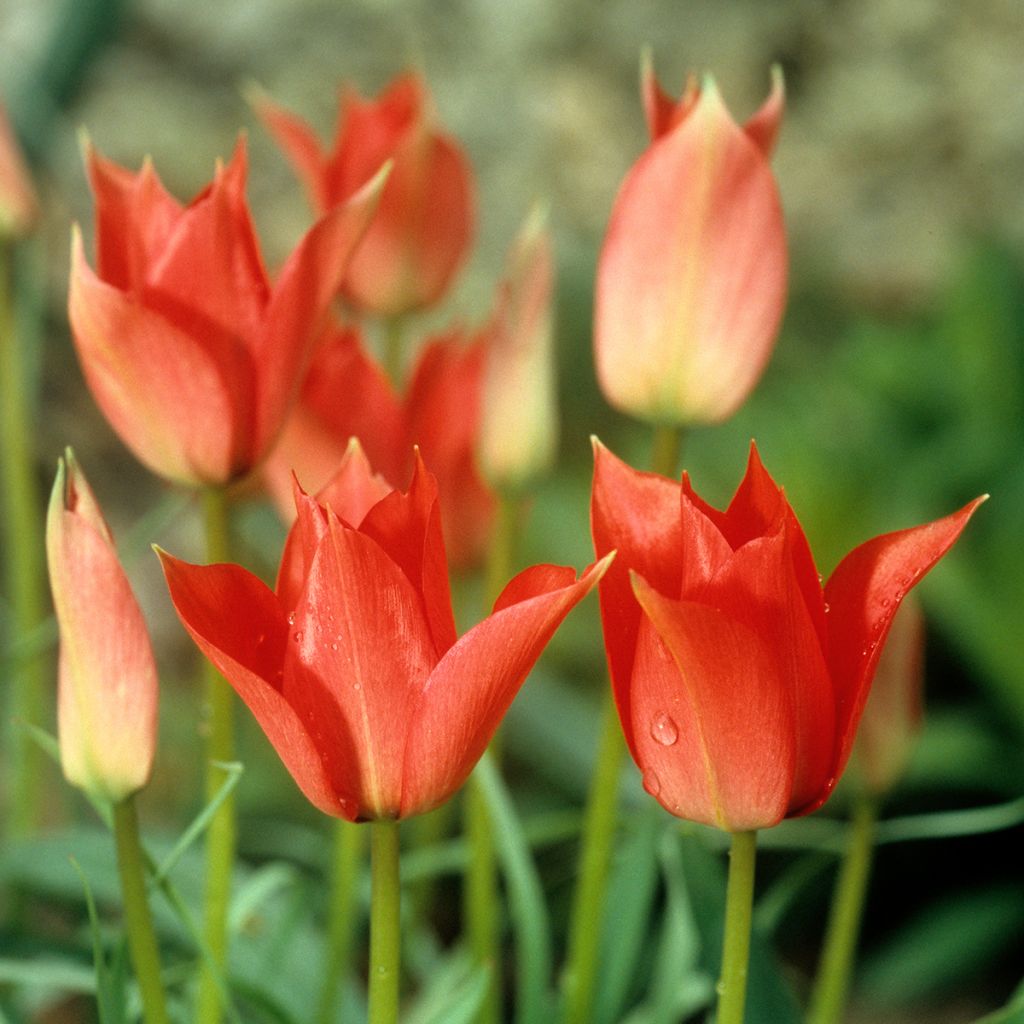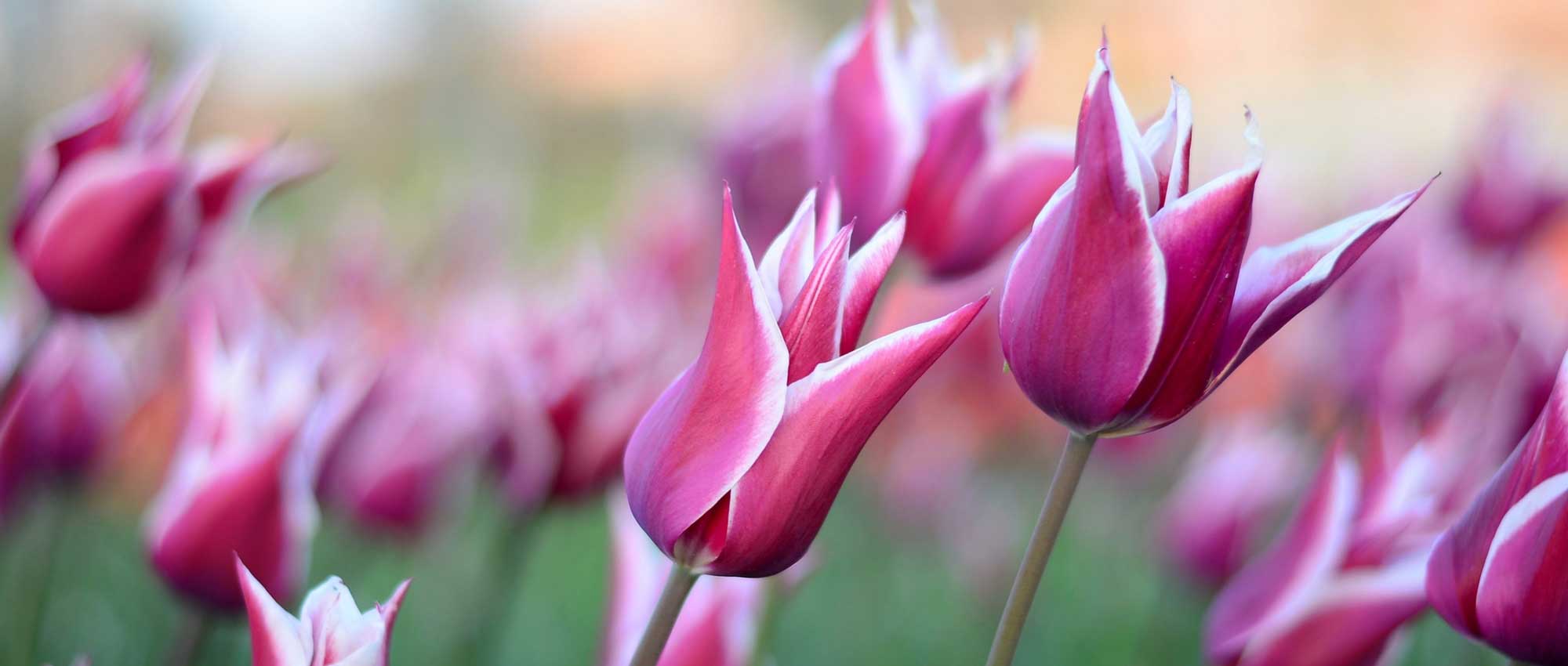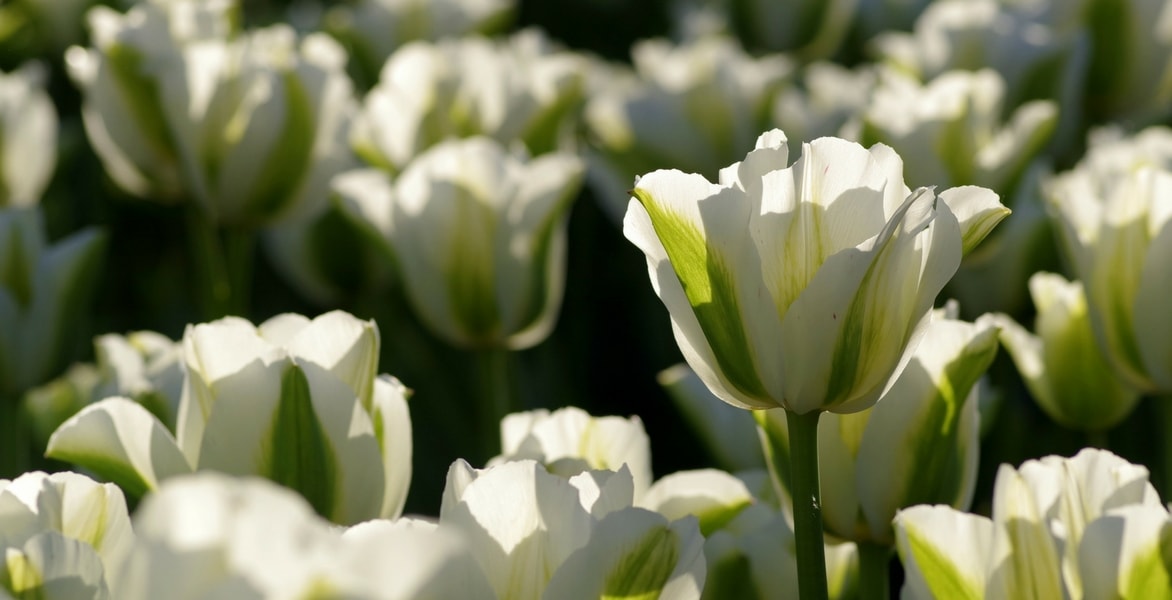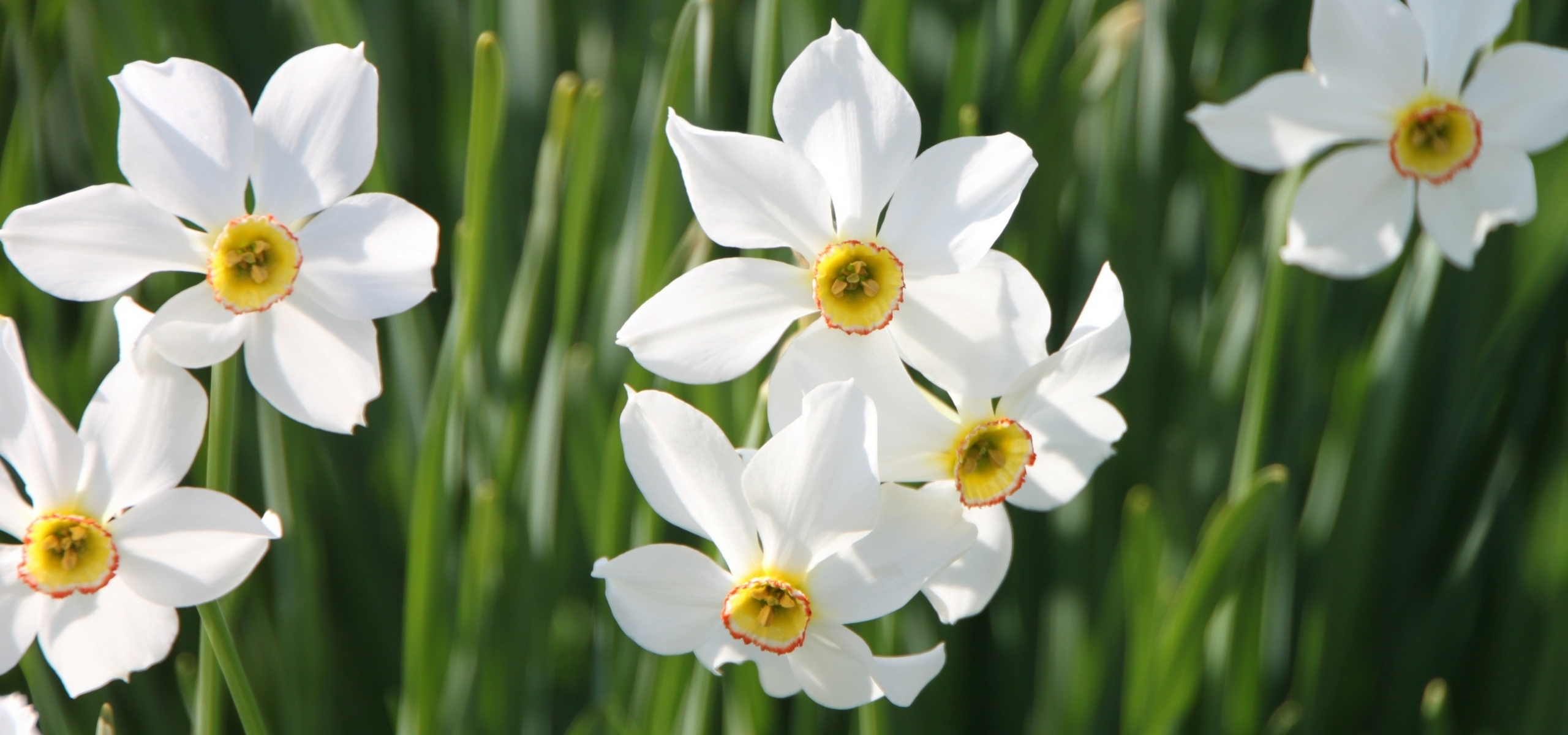

Tulipa Royal Charm - Tulipe Groupe Fleur de Lys Royal Charm
Tulipa Royal Charm - Lily flowering Tulipharm
Tulipa Royal Charm
Lily-flowered Tulip
Special offer!
Receive a €20 voucher for any order over €90 (excluding delivery costs, credit notes, and plastic-free options)!
1- Add your favorite plants to your cart.
2- Once you have reached €90, confirm your order (you can even choose the delivery date!).
3- As soon as your order is shipped, you will receive an email containing your voucher code, valid for 3 months (90 days).
Your voucher is unique and can only be used once, for any order with a minimum value of €20, excluding delivery costs.
Can be combined with other current offers, non-divisible and non-refundable.
Home or relay delivery (depending on size and destination)
Schedule delivery date,
and select date in basket
This plant carries a 6 months recovery warranty
More information
We guarantee the quality of our plants for a full growing cycle, and will replace at our expense any plant that fails to recover under normal climatic and planting conditions.
Would this plant suit my garden?
Set up your Plantfit profile →
Description
The Lily-flowered Tulip 'Royal Charm' is an elegant variety that brings a touch of dynamism to spring displays with its tapered petals curved in a beautiful vermilion red enhanced by a sparkling yellow heart. It stands out with its graceful, slender and airy habit, reaching between 45 and 60 cm at maturity. Ideal for sunny or lightly shaded areas, this late-flowering tulip thrives in light, well-drained soil and prefers moderate watering. Perfect in elegant pots, refined borders, or in mass plantings in beds, it offers a unique, much appreciated silhouette in both contemporary and traditional gardens. Resistant to cold and wind, it only requires not to be planted in overly wet soil.
The Tulip 'Royal Charm' belongs to the Liliaceae botanical family classified in the lily-flowered tulip group characterised by their tapered and outwardly arched petals. This recent cultivar was introduced by Dutch horticulturists as a successor to the 'Ballerina'. It is distinguished by its large flowers in a burnt orange to vermillion with a distinct yellow base, a visual combination more intense than the typical species originating from the mountains of Central Europe. Its growth is rapid from autumn planting: the tulip reaches 45 to 60 cm in height in open ground and maintains an elegant silhouette in pots. The flowers have an elongated bell shape opening into a star at dawn and feature six robust tepals; they are long-lasting in vases. Flowering occurs in late spring, from late April to May. The deciduous foliage comprises 4 to 5 lanceolate leaves 3–5 cm wide with medium green foliage. The stems are sturdy. The root system includes a large, fleshy bulb, sensitive to excess moisture.
In a sunny border or a large pot with clean delineations, the 'Royal Charm' tulip imposes its silhouette like a tranquil flame in a garden slowly awakening to the April light. To accentuate its orange glow and tapered petals, it can be paired with tulips like the 'White Liberstar' in brilliant white, or with the 'Ballerina', in a dialogue of warm tones and refined shapes. Around them, the airy foliage of bronze fennels or the bluish masses of forget-me-nots will fill the space without cluttering it. Planted en masse or in rhythmic groups, it will creates almost calligraphic movements in the flowerbeds, where the slightest breath of wind will animate its presence.
Plant habit
Flowering
Foliage
Botanical data
Tulipa
Royal Charm
Liliaceae
Lily-flowered Tulip
Tulipa Royal Charm
Cultivar or hybrid
Planting and care
Plant the Royal Charm Lily-flowered Tulip bulbs in autumn, from September to December, at a depth of 15 cm, spacing them 10 cm apart. Planting should be done in ordinary, slightly acidic, neutral, or slightly chalky, loose, well-worked, and well-drained soil. Never add poorly decomposed manure or compost to the planting soil as this could cause the bulbs to rot. The Lily-flowered Tulip will grow well in cool to dry soil. Place it in a good, sunny position or in partial shade. After flowering, the foliage becomes faded and unsightly; we recommend planting Heucheras, Tiarellas, Brunneras, Bleeding Hearts, Cypress Spurge in the foreground of your borders, their foliage will enhance the colours of your tulips and during the later season, they will elegantly conceal their yellowed leaves.
Planting period
Intended location
Care
Planting & care advice
This item has not been reviewed yet - be the first to leave a review about it.
Similar products
Haven't found what you were looking for?
Hardiness is the lowest winter temperature a plant can endure without suffering serious damage or even dying. However, hardiness is affected by location (a sheltered area, such as a patio), protection (winter cover) and soil type (hardiness is improved by well-drained soil).

Photo Sharing Terms & Conditions
In order to encourage gardeners to interact and share their experiences, Promesse de fleurs offers various media enabling content to be uploaded onto its Site - in particular via the ‘Photo sharing’ module.
The User agrees to refrain from:
- Posting any content that is illegal, prejudicial, insulting, racist, inciteful to hatred, revisionist, contrary to public decency, that infringes on privacy or on the privacy rights of third parties, in particular the publicity rights of persons and goods, intellectual property rights, or the right to privacy.
- Submitting content on behalf of a third party;
- Impersonate the identity of a third party and/or publish any personal information about a third party;
In general, the User undertakes to refrain from any unethical behaviour.
All Content (in particular text, comments, files, images, photos, videos, creative works, etc.), which may be subject to property or intellectual property rights, image or other private rights, shall remain the property of the User, subject to the limited rights granted by the terms of the licence granted by Promesse de fleurs as stated below. Users are at liberty to publish or not to publish such Content on the Site, notably via the ‘Photo Sharing’ facility, and accept that this Content shall be made public and freely accessible, notably on the Internet.
Users further acknowledge, undertake to have ,and guarantee that they hold all necessary rights and permissions to publish such material on the Site, in particular with regard to the legislation in force pertaining to any privacy, property, intellectual property, image, or contractual rights, or rights of any other nature. By publishing such Content on the Site, Users acknowledge accepting full liability as publishers of the Content within the meaning of the law, and grant Promesse de fleurs, free of charge, an inclusive, worldwide licence for the said Content for the entire duration of its publication, including all reproduction, representation, up/downloading, displaying, performing, transmission, and storage rights.
Users also grant permission for their name to be linked to the Content and accept that this link may not always be made available.
By engaging in posting material, Users consent to their Content becoming automatically accessible on the Internet, in particular on other sites and/or blogs and/or web pages of the Promesse de fleurs site, including in particular social pages and the Promesse de fleurs catalogue.
Users may secure the removal of entrusted content free of charge by issuing a simple request via our contact form.
The flowering period indicated on our website applies to countries and regions located in USDA zone 8 (France, the United Kingdom, Ireland, the Netherlands, etc.)
It will vary according to where you live:
- In zones 9 to 10 (Italy, Spain, Greece, etc.), flowering will occur about 2 to 4 weeks earlier.
- In zones 6 to 7 (Germany, Poland, Slovenia, and lower mountainous regions), flowering will be delayed by 2 to 3 weeks.
- In zone 5 (Central Europe, Scandinavia), blooming will be delayed by 3 to 5 weeks.
In temperate climates, pruning of spring-flowering shrubs (forsythia, spireas, etc.) should be done just after flowering.
Pruning of summer-flowering shrubs (Indian Lilac, Perovskia, etc.) can be done in winter or spring.
In cold regions as well as with frost-sensitive plants, avoid pruning too early when severe frosts may still occur.
The planting period indicated on our website applies to countries and regions located in USDA zone 8 (France, United Kingdom, Ireland, Netherlands).
It will vary according to where you live:
- In Mediterranean zones (Marseille, Madrid, Milan, etc.), autumn and winter are the best planting periods.
- In continental zones (Strasbourg, Munich, Vienna, etc.), delay planting by 2 to 3 weeks in spring and bring it forward by 2 to 4 weeks in autumn.
- In mountainous regions (the Alps, Pyrenees, Carpathians, etc.), it is best to plant in late spring (May-June) or late summer (August-September).
The harvesting period indicated on our website applies to countries and regions in USDA zone 8 (France, England, Ireland, the Netherlands).
In colder areas (Scandinavia, Poland, Austria...) fruit and vegetable harvests are likely to be delayed by 3-4 weeks.
In warmer areas (Italy, Spain, Greece, etc.), harvesting will probably take place earlier, depending on weather conditions.
The sowing periods indicated on our website apply to countries and regions within USDA Zone 8 (France, UK, Ireland, Netherlands).
In colder areas (Scandinavia, Poland, Austria...), delay any outdoor sowing by 3-4 weeks, or sow under glass.
In warmer climes (Italy, Spain, Greece, etc.), bring outdoor sowing forward by a few weeks.




















































